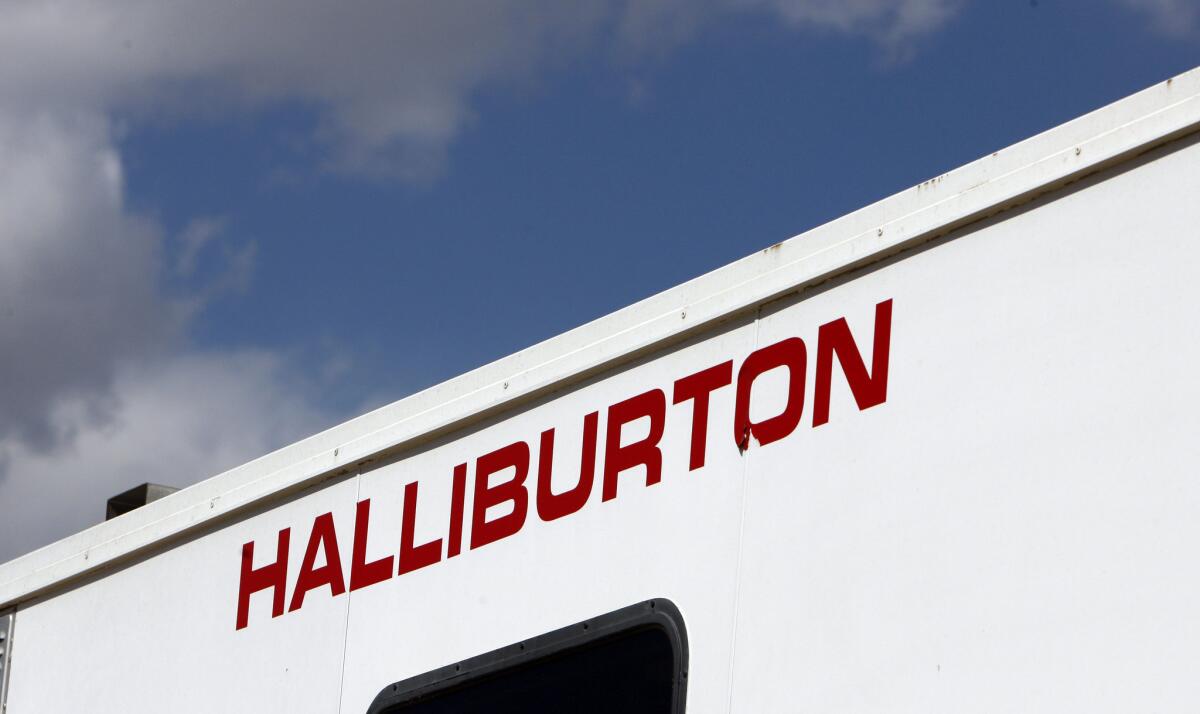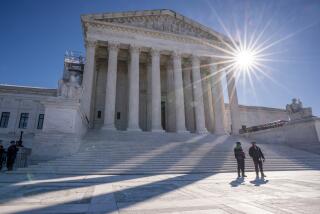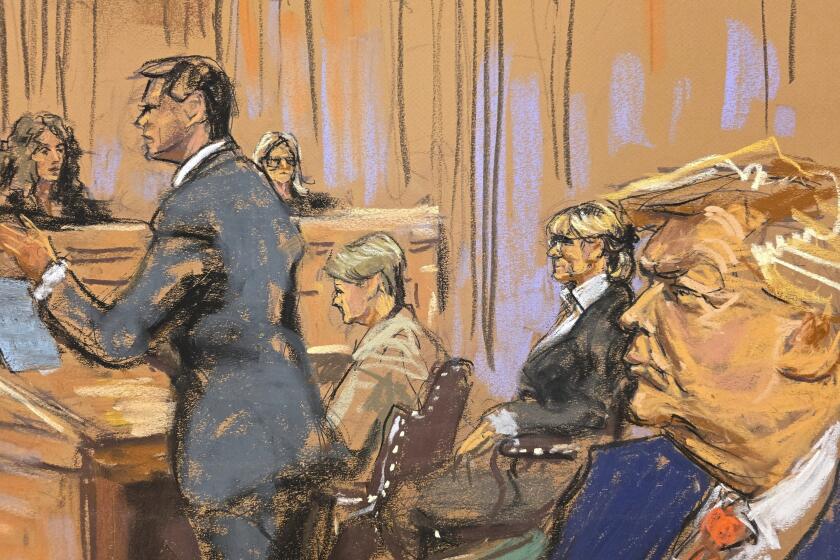Opinion: Supreme Court trims, rather than gutting, investor class actions

Ruling on Halliburton Co.’s appeal in a securities law case, the Supreme Court on Monday made it a bit harder for investors — including just about every American with a 401(k) — to recover the share value they lost when a public company’s deceptions were exposed.
The blow to investors is likely to be just a glancing one, however. As three of the court’s liberal justices put it, the ruling “should impose no heavy toll on securities fraud plaintiffs with tenable claims.”
And the result could have been much worse, had the court handed Halliburton a complete victory instead of a limited one. Happily, the company found only three takers on the court for its proposal to throw out the 1988 precedent that opened the door to many class-action lawsuits by investors. Instead, the majority opted to leave that ruling intact, while giving defendants a better chance to stop an individual plaintiff’s case from becoming a class action.
The real losers may be plaintiffs and lawyers who seek class-action status for dubious claims of securities fraud. Instead of being able to win settlements from defendants eager to avoid an expensive trial, these plaintiffs will be more vulnerable to having their cases topedoed by pretrial motions.
The original lawsuit was brought by the Erica P. John Fund, which accused Halliburton of misrepresenting its anticipated revenue and liabilities in an effort to pump up the price of its stock. Halliburton later made “corrective disclosures” that drove its stock price down, the fund’s lawyers argued, hurting all investors who’d purchased shares at what proved to be an artificially high price. They sought to turn the case into a class action, and the lower courts agreed (after an earlier round of appeals that also reached the Supreme Court).
In the Basic Inc. vs. Levinson ruling from 1988, the Supreme Court held that individual investors don’t have to prove they relied on or even saw a company’s misstatements in order to have been defrauded. Instead, the justices said courts could presume that stock prices reflect the influence of all material information available to the public. Thus, if a company’s misleading disclosures were public and significant, a “fraud on the market” is presumed to have occurred and all investors who bought before the truth was revealed can be considered victims.
Halliburton asked the justices to throw out the Basic decision and require each and every plaintiff to show that he or she relied on the company’s erroneous information when purchasing its shares. Such a change would make it far harder to cobble together a class action, which in turn could make it far harder to find an attorney willing to bring a lawsuit. Considering the cost, it’s hard to justify suing to recover one small investor’s losses, no matter how painful they might be to that person. But it’s an entirely different equation when there are hundreds or thousands of investors joining their claims.
In any event, the court declined to abandon the “fraud on the market theory.” Writing for the court, Chief Justice John G. Roberts Jr. found that the plaintiff hadn’t presented any new or persuasive arguments that stock prices are somehow unperturbed by a company’s false public statements, or that investors don’t care whether those prices are artificially inflated when they decide what to buy.
The majority also rejected Halliburton’s argument that investors must prove that a material, public misstatement affected a company’s stock price, rather than having courts simply presume that it did.
But the court said defendants should have the chance to prove that a misstatement didn’t affect their share price before the case against them gets certified as a class action. If the defendants in a case succeed on that point, the lawsuit won’t be certified as a class action, and each individual plaintiff will have to show that the alleged fraud caused him or her to lose money. Defendant corporations will thus be able to fight a key legal battle earlier in a lawsuit, before the potential cost skyrockets and the pressure to settle increases accordingly.
As a result of the ruling, the Erica P. John Fund’s lawsuit will go back to District Court to consider Halliburton’s argument that the alleged misrepresentations did not affect its stock price.
The court’s three most conservative justices -- Clarence Thomas, Antonin Scalia and Samuel A. Alito Jr. -- argued that the Basic ruling should have been overturned because it was based on “muddled logic and armchair economics.” Writing for this group, Thomas cited studies showing that some types of public information, including a company’s financial disclosures, are either ignored or only slowly recognized by investors. He added that rather than relying on the integrity of a stock’s price, many investors “trade for the opposite reason — that is, because they think the market has under- or overvalued the stock, and they believe they can profit from that mispricing.”
Thomas asserted that Congress didn’t endorse the Basic ruling just because it left the presumption intact even as it reined in securities lawsuits — not once, but twice. “We ought to presume that Congress expects us to correct our own mistakes — not the other way around,” Thomas wrote. But that’s assigning a level of humility to lawmakers that they do not deserve.
The more likely explanation is that members of Congress recognized how realistic the court had been in the Basic ruling. The run-of-the-mill small investor relies on market prices to reflect what sophisticated, attentive money managers know about publicly traded companies. If those prices rise in response to misleading or false disclosures, investors who buy before the record is later corrected can get hurt, and they need to be able to join forces if they’re going to have any hope of recovering.
As The Times editorial board wrote this year, “While securities fraud can be devastating to small investors, their losses rarely are large enough to make it worthwhile for them to sue as individuals. That’s why class-action suits that combine the claims of all the defrauded investors are vital to protecting the little guy on Wall Street.”
The Supreme Court’s ruling Monday in the Halliburton case gives the company and other publicly traded corporations a thicker shield against nuisance lawsuits, which is good. But it also preserves the protections that the Basic ruling provided investors who really are victimized by fraudulent statements, and that’s even better.
Follow Healey’s intermittent Twitter feed: @jcahealey
More to Read
A cure for the common opinion
Get thought-provoking perspectives with our weekly newsletter.
You may occasionally receive promotional content from the Los Angeles Times.










